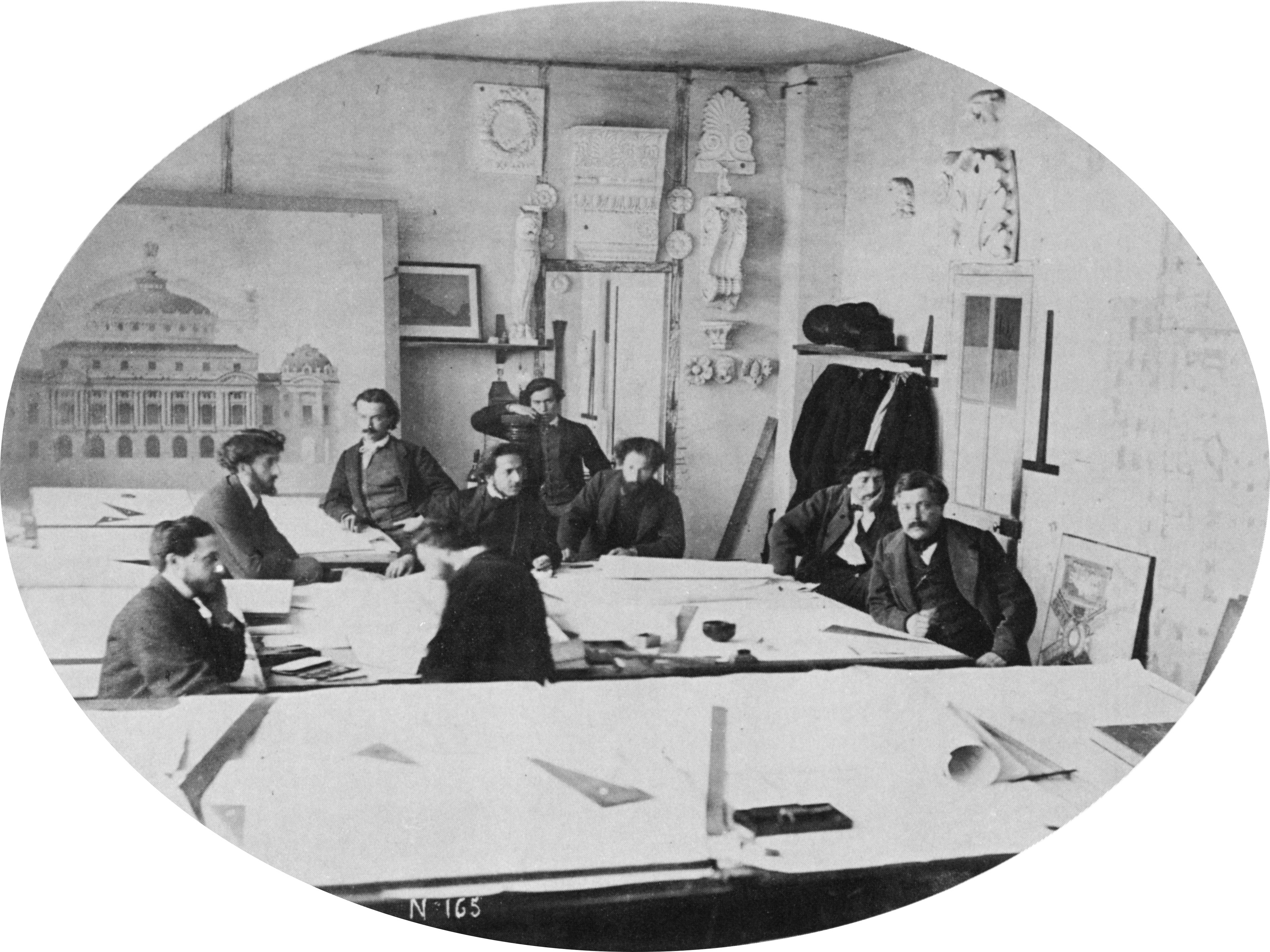The first university architecture programs appeared in the late nineteenth century, at MIT (1865) and the University of Pennsylvania (1868). Previously—and for a long time thereafter—most architects in the English-speaking world learned their craft through apprenticeship, on the job, working in an office. Frank Lloyd Wright, Edwin Lutyens, Charles Rennie Mackintosh, Charles A. Platt, Horace Trumbauer, Ralph Adams Cram, and Bertram Goodhue are prominent examples. While it is still theoretically possible to become a registered architect through apprenticeship, in practice formal education has taken over the training of architects. How does one teach someone to be an architect? Since architecture is not a science, there is no underlying body of knowledge to absorb. Architects study precedents, but learning to design is like learning how to swim, you have to jump in the water. Hence, the studio system. Students are assigned building problems—simple at first, increasingly more complex—and develop solutions in drawings and models. These are evaluated by the teacher and invited “jurors”; the term is apt since student are required to “defend” their designs in public. The process is intended to simulate an actual building commission in the sense that there is a list of functional requirements and an actual building site, but the studio approach has severe limitations: drawings and models can only go so far in simulating reality; there is not enough time to develop details, so materials and construction tend to take a back seat; building costs are rarely considered. Above all, there is no client. As a result, while students imagine themselves to be architects, their view of architecture is very lopsided. Satisfying the client, meeting the budget, building on time, resisting the elements, and the challenging task of “getting the job,” in H. H. Richardson’s memorable phrase, are not considered to be a part of the design process.
Of course, all architects quickly learn these lessons—on their first job—and in that sense apprenticeship continues to be a valuable part of learning how to be an architect. But the studio experience has a bad effect: it leads to over-intellectualization of the profession. Talking, accompanied by obscure theories, jargon (usually borrowed from other disciplines), and strained analogies, takes the place of building. Lutyens, for one, saw this coming. “All this talk brings the ears so far forward that they make blinkers for the eyes,” he once observed.


Perhaps there would be more demand for architects if schools did teach “Satisfying the client, meeting the budget, building on time, resisting the elements, and the challenging task of “getting the job,”,,,” There seems no inherent obstacle to making these part of the curriculum.